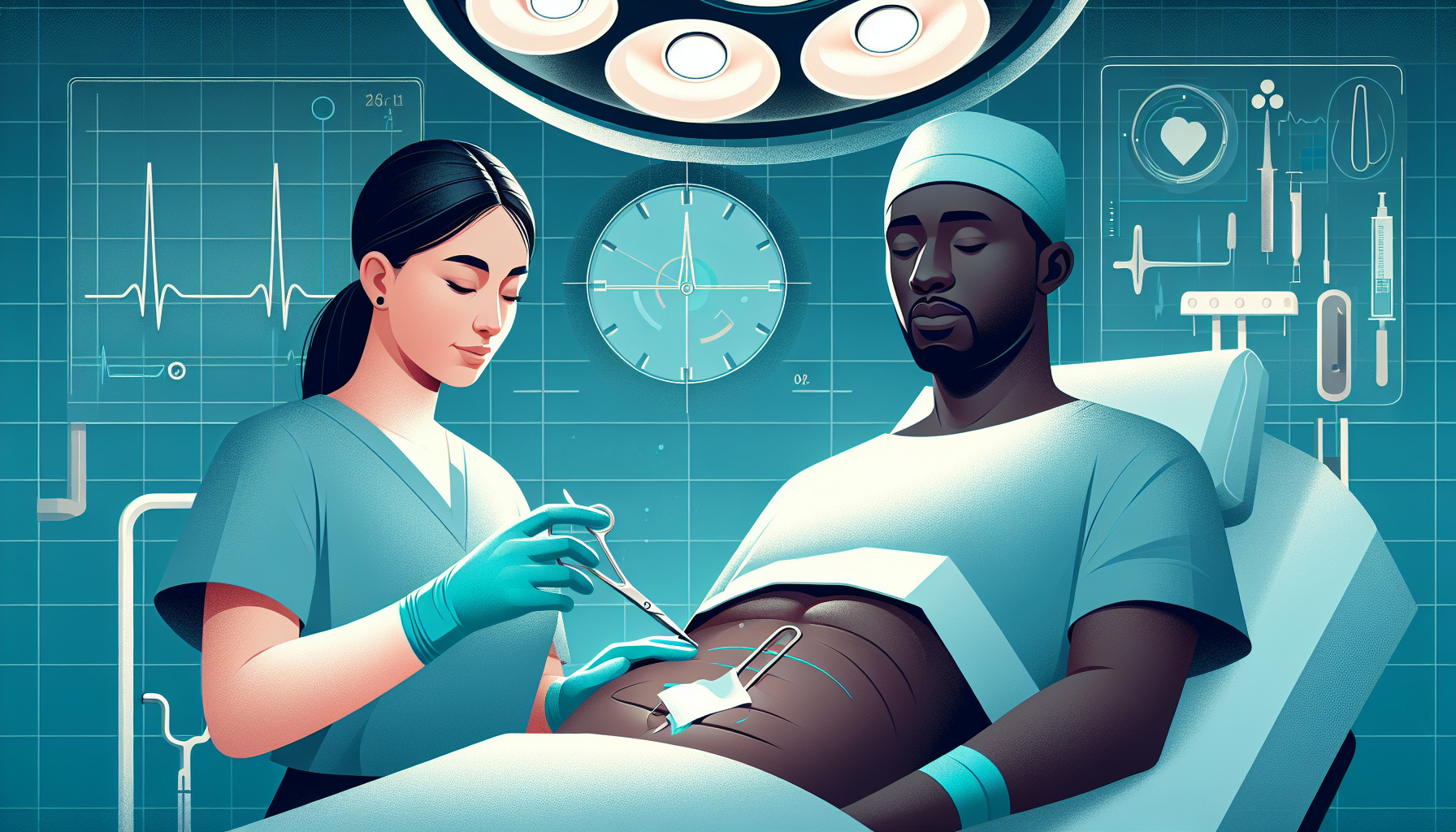Our Summary
This research paper discusses diverticulitis, a disease that affects the digestive tract, specifically the colon. It often involves the formation of small pouches in the colon that become inflamed or infected. The paper focuses on a surgical procedure called the Hartmann procedure, which is frequently used to treat severe or complicated cases of diverticulitis.
The Hinchey classification is also discussed, which is a system used to categorize the severity of diverticulitis. This classification system helps doctors determine the most effective treatment method. The research specifically examines cases of perforated diverticulitis, which is a severe condition where the little pouches in the colon rupture, causing an infection in the abdominal cavity.
Therefore, this paper evaluates the use and effectiveness of the Hartmann procedure in handling severe cases of diverticulitis, particularly those that have reached a level of severity where the colon has perforated.
FAQs
- What is the Hartmann procedure in relation to diverticulitis surgery?
- How does the Hinchey classification relate to diverticulitis surgery?
- What is meant by perforated diverticulitis and how is it treated through surgery?
Doctor’s Tip
After diverticulitis surgery, it is important to follow a clear liquid diet for a few days before gradually transitioning to a low-fiber diet. This will help your digestive system heal and prevent further complications. Make sure to stay hydrated and follow your doctor’s instructions for pain management and wound care. It is also important to gradually increase your physical activity as you recover to prevent complications and promote healing. Be sure to attend follow-up appointments with your doctor to monitor your progress and address any concerns.
Suitable For
Patients with severe and complicated cases of diverticulitis are typically recommended for surgery. This includes patients with:
- Perforated diverticulitis: When a diverticulum bursts, causing inflammation and infection in the surrounding tissues.
- Abscess formation: When pus accumulates in the diverticulum or surrounding tissues, causing pain and discomfort.
- Fistula formation: When a tunnel-like connection forms between the colon and another organ, such as the bladder or skin.
- Recurrent episodes of acute diverticulitis: When a patient experiences multiple episodes of inflammation and infection despite conservative management.
- Failure to respond to medical treatment: When antibiotics and other non-surgical treatments are ineffective in controlling symptoms and preventing complications.
It is important for patients to discuss the risks and benefits of diverticulitis surgery with their healthcare provider to determine the most appropriate treatment plan for their individual case.
Timeline
Before surgery:
- Patient experiences symptoms of diverticulitis such as abdominal pain, fever, nausea, and changes in bowel habits.
- Patient may undergo imaging tests such as a CT scan to confirm the diagnosis.
- Patient is usually treated with antibiotics and a modified diet to manage symptoms and prevent complications.
- If the diverticulitis is severe or recurrent, surgery may be recommended.
After surgery:
- Patient undergoes a Hartmann procedure, which involves removing the affected part of the colon and creating a colostomy.
- Patient may spend several days in the hospital recovering from surgery and managing pain.
- Patient will need to adjust to life with a colostomy, including learning how to care for it and manage any potential complications.
- Patient will gradually resume normal activities and may need to follow a special diet to prevent future episodes of diverticulitis.
- Follow-up appointments with the surgeon will be scheduled to monitor recovery and address any concerns.
What to Ask Your Doctor
- What type of surgery do you recommend for my diverticulitis?
- What are the risks and potential complications associated with this surgery?
- How long will the recovery process be after the surgery?
- Will I need to make any lifestyle changes or follow a special diet after the surgery?
- What is the success rate of this surgery for treating diverticulitis?
- Are there any alternative treatments or less invasive procedures that could be considered instead of surgery?
- How long will I need to stay in the hospital after the surgery?
- What can I expect in terms of pain management following the surgery?
- Will I need to follow up with a specialist or have any ongoing medical care after the surgery?
- Are there any long-term effects or complications that I should be aware of after the surgery?
Reference
Authors: Curran T, Kwaan MR. Journal: Adv Surg. 2020 Sep;54:1-16. doi: 10.1016/j.yasu.2020.04.001. Epub 2020 May 31. PMID: 32713424
